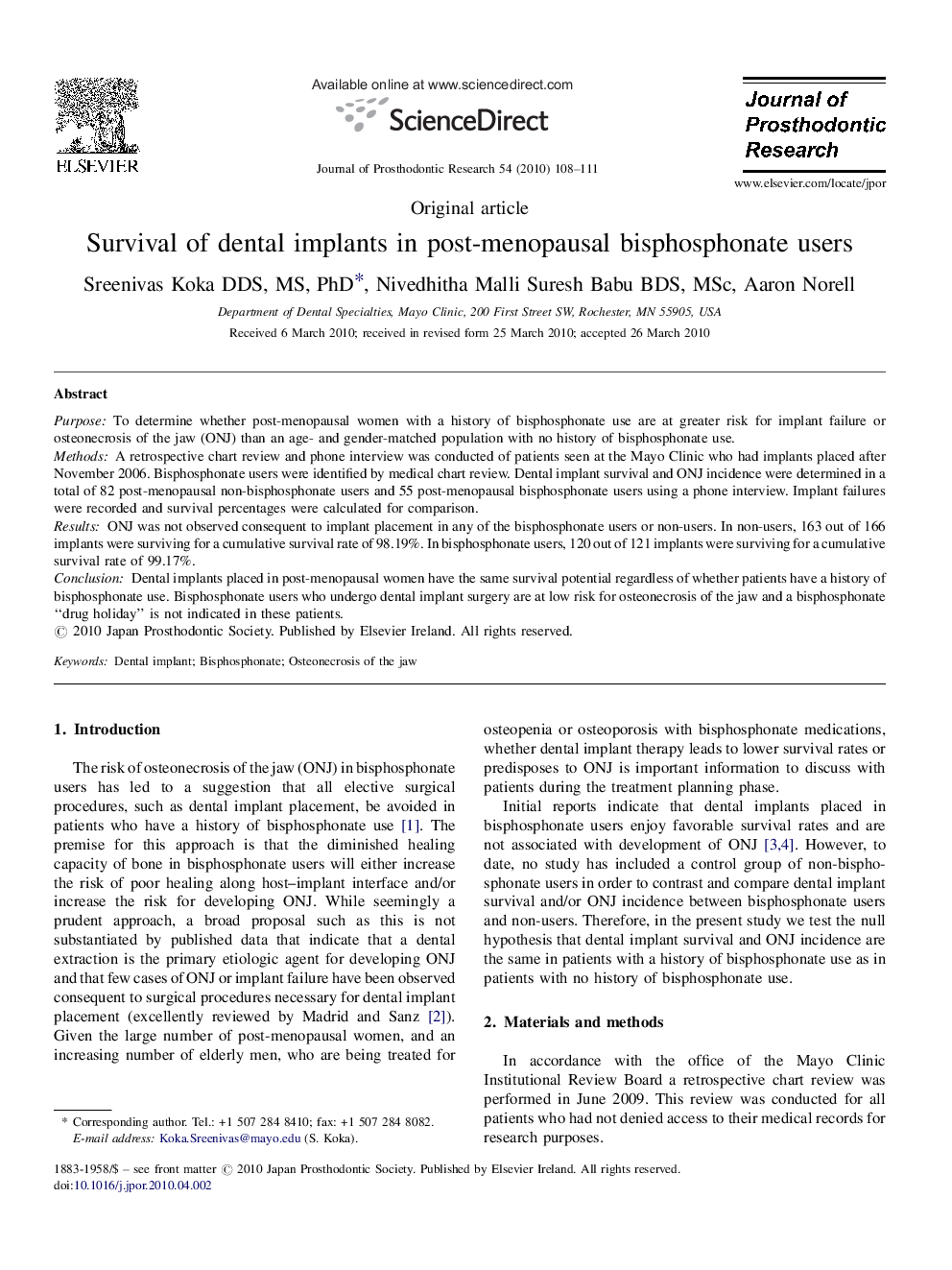| Article ID | Journal | Published Year | Pages | File Type |
|---|---|---|---|---|
| 3160683 | Journal of Prosthodontic Research | 2010 | 4 Pages |
PurposeTo determine whether post-menopausal women with a history of bisphosphonate use are at greater risk for implant failure or osteonecrosis of the jaw (ONJ) than an age- and gender-matched population with no history of bisphosphonate use.MethodsA retrospective chart review and phone interview was conducted of patients seen at the Mayo Clinic who had implants placed after November 2006. Bisphosphonate users were identified by medical chart review. Dental implant survival and ONJ incidence were determined in a total of 82 post-menopausal non-bisphosphonate users and 55 post-menopausal bisphosphonate users using a phone interview. Implant failures were recorded and survival percentages were calculated for comparison.ResultsONJ was not observed consequent to implant placement in any of the bisphosphonate users or non-users. In non-users, 163 out of 166 implants were surviving for a cumulative survival rate of 98.19%. In bisphosphonate users, 120 out of 121 implants were surviving for a cumulative survival rate of 99.17%.ConclusionDental implants placed in post-menopausal women have the same survival potential regardless of whether patients have a history of bisphosphonate use. Bisphosphonate users who undergo dental implant surgery are at low risk for osteonecrosis of the jaw and a bisphosphonate “drug holiday” is not indicated in these patients.
